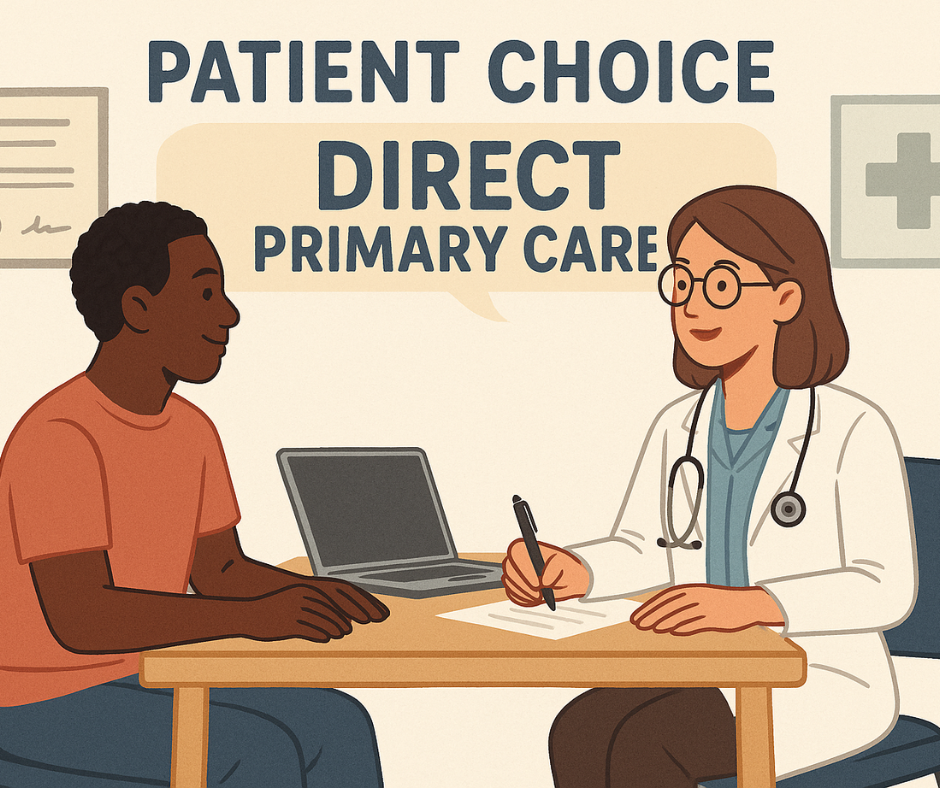Nudged within the “One Big Beautiful Bill” is a small tax provision that may only apply to a small number of consumers, but it could have outlasting positive impacts on how healthcare services are delivered to American patients.
Beginning in 2026, American patients who engage the services of a doctor at a direct primary care clinic will be allowed to use their tax-advantaged Health Savings Accounts to pay the subscripted fees charged by the clinic, as those payments will now qualify as “medical expenses” and this arrangement is not a “health insurance plan”.
This also means that these healthcare arrangements can count toward deductibles, which could significantly reduce the cost of healthcare if patients meet their maximums.
The reform is contained in Section 71308 of the One Big Beautiful Bill, drawing from the Primary Care Enhancement Act, a piece of legislation that many direct primary care doctors and their patients have been lobbying to support for the last several years.
While the language of the section is primarily focused on tax law, and how Americans can use their HSAs, what it realistically does is empower patients who would like to contract directly with their doctors using the direct primary care model.
As I’ve written about elsewhere, direct primary care is a fascinating way for patients to take charge of their healthcare by removing the middlemen that otherwise make costs exorbitant and choices limited:
At least one new doctor-patient arrangement is promising a revolution in consumer choice by bypassing insurance altogether. It’s called direct primary care, and it’s catching on across the country.
Rather than relying on insurance for ordinary health expenses, these new doctor clinics rely on monthly fees from patients, usually less than $100.
If anything more is required during doctor visits, the prices for every service and test are transparent and don’t vary depending on your plan. By not accepting insurance of any type, each clinic saves on administrative costs and overhead, prioritizing patients over costly insurers.
The results are just as intended: lower costs, more preventive care, and more face time with medical professionals.
Rather than using insurance for just about every medical or healthcare transaction, direct primary care allows patients to pay doctors a fair rate at market prices, allowing doctors to charge flat rates for any of their services ranging from blood tests to secondary examinations. Health insurance is never involved.
This arrangement strikes at the heart of what we at the Consumer Choice Center have dubbed the “insurance piggy bank delusion,” wherein someone else is always paying for our care — whether insurance or government programs — removing the consumer from the interchange between providers and insurers.
How Direct Primary Care Works
How this works practically, and as I’ve done personally for years, is that consumers contract with health insurers for high-deductible plans used primarily for emergencies.
That qualifies them to open up Health Savings Accounts for medical expenses, allowing Americans to make tax-deductible contributions into an account where they can invest in the market and allow the balance to compound and grow tax-free. Any HSA holder can withdraw funds from the account to directly pay for medical expenses if they need to.
Then, patients can join a direct primary care clinic with a participating doctor, where they pay flat rates for appointments, screenings and tests, and never include the insurance company in their everyday medical decisions.
It also frees up doctors to take a much longer time with their patients, as they’re not reliant on “getting more people in the door” in order to cover their own costs. Doctors are also freed from the obligations of dealing with mountains of insurance reimbursements and networks, reducing the cost of administration.
This helps by reducing the cost of insurance. By getting what is often called “catastrophic insurance,” patients take on mild financial risk (up to their deductible) and take care of the smaller medical expenses themselves or through their HSAs. The direct primary care model then allows patients to take control of their own healthcare decisions at affordable and transparent rates.
Realistically, this is how healthcare is supposed to be delivered to patients in a competitive market economy.
By directly connecting patients to doctors and removing the need to have insurance for every medical or health transaction, it humanizes and supercharges competition in the healthcare sector. It’s the absolutely embodiment of consumer choice.
Improving patient choice
In my view, this small change will elevate direct primary care as just one new of many models of healthcare delivery that will directly compete for patients and consumers.
And even more can be done. Opening up the category of “medical and health expenses” to new technologically innovative tools, apps, and devices would also be a boon to better health and competition that would benefit consumers. The WEAR IT Act would allow HSA customers to purchase tech wearables that track health metrics, and is a worthy bill to consider.
If we can empower the patient in the face of the bureaucratic and complicated healthcare sector by supercharging competition, it means we can restore the market mechanisms that work in every other sector of the economy. Lower prices, better care, fewer middlemen, and a healthier society.
I would really like to congratulate not only direct primary care doctors and patients for this huge win, but also the Direct Primary Care Coalition and similar groups in DC that has this a cornerstone of their public engagements with lawmakers.
Yaël Ossowski is deputy director at the Consumer Choice Center.
Published at the Consumer Choice Center
